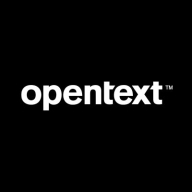

Atlassian ALM and OpenText Software Delivery Management are competing in the application lifecycle management domain. Atlassian ALM has an edge in pricing and customer service, while OpenText excels with its robust features, providing significant value despite a higher price.
Features: Atlassian ALM offers collaboration tools, seamless integration with popular platforms like JIRA and Confluence, and efficient workflow management, enhancing team efficiency. OpenText Software Delivery Management provides comprehensive lifecycle management, advanced analytics, and robust traceability, allowing detailed insights and control over the development process.
Room for Improvement: Atlassian ALM can benefit from improved repository integrations and enhanced in-depth analytics. Users also seek streamlined customization options and faster updates. OpenText Software Delivery Management needs to simplify its user interface and reduce deployment complexity. Enhanced cloud options and improved tutorials or guidance would also be beneficial to streamline the user experience.
Ease of Deployment and Customer Service: Atlassian ALM utilizes a flexible cloud-based model with efficient support, ensuring quick problem resolution and ease of access. OpenText Software Delivery Management, though comprehensive in service, has a more involved and complex deployment process, providing thorough support and assistance.
Pricing and ROI: Atlassian ALM's pricing is competitive, supporting a strong return on investment with its cost-effective nature and rapid deployment. In contrast, OpenText Software Delivery Management requires a higher initial investment but offers substantial feature-driven benefits that can potentially offset costs over time.
| Product | Market Share (%) |
|---|---|
| OpenText Software Delivery Management | 5.0% |
| Atlassian ALM | 2.2% |
| Other | 92.8% |

| Company Size | Count |
|---|---|
| Small Business | 7 |
| Midsize Enterprise | 2 |
| Large Enterprise | 32 |
How to use Atlassian to manage application lifecycle: Atlassian builds software to pull together all the elements of application lifecycle management. Product management, developers, Q/A, dev ops, and business stake holders all have their own ways of interacting with application lifecycle management and Atlassian splits up the process into a few buckets.
1) Collaborate to plan and envision work
Atlassian's Confluence is a collaboration platform for building and driving consensus. Call stake holders in to give approval, comment on, and share pages and integrate with the rest of the development toolchain.
2) Build and track roadmaps
Atlassian's JIRA Software offers incredibly flexible project management with custom workflows, plugins, and high visibility rollups through JIRA Portfolio. Issues can be embedded right in confluence, or be used to kick off new branches in version control. Keep everyone on the same page with project progress.
3) Track and deploy code
Atlassian's Bitbucket is the world's most robust Git solution. The ability to deploy multiple-nodes with failover, global mirroring for super fast clones, and powerful code review control set it apart from competition. Bitbucket also has a mature plugin and hooks system that allows extensions and connection to a suite of CI software.
4) Support and Iterate
Track support requests, bugs, and route users in the right direction with JIRA Service Desk. With the same custom workflow engine as JIRA Software, a tight integration with the rest of the stack, and a knowledge base function make it a powerful addition to the ALM stack.
5) Tie it together
ChatOps helps tie every part of the ALM together. Get stake holders in the same room to manage a project, teams in the same page to manage their work, or plugin automated members to report on CI status, pull requests, page changes in Confluence, or bug reports. Like every piece of Atlassian's ALM there is a mature API for extending plugins and everything can be hosted behind your own firewall.
OpenText Software Delivery Management provides application lifecycle management with Agile and Waterfall support. It features intuitive interfaces, CI/CD integration, automated testing, and robust reporting, improving project management efficiency and usability.
Designed to enhance teams' productivity and streamline processes, OpenText Software Delivery Management integrates seamlessly with Agile methodologies. Its comprehensive backlog and requirements management, user stories, and test management make it a complete tool for managing the development lifecycle. The platform aligns with DevOps, providing traceability and extensive customization options. Traceability from requirements to deployments is enhanced, making it easier for teams to track progress. It offers integration with popular tools like Jenkins and JIRA, ensuring a unified approach to continuous delivery and testing management.
What key features does OpenText Software Delivery Management include?OpenText Software Delivery Management is implemented across technology-focused industries, supporting Agile processes like requirements management and defect tracking. Organizations use it to standardize development workflows and optimize continuous delivery integration, choosing it for its ability to support both Agile and Waterfall methodologies within application lifecycle management.
We monitor all Application Lifecycle Management (ALM) Suites reviews to prevent fraudulent reviews and keep review quality high. We do not post reviews by company employees or direct competitors. We validate each review for authenticity via cross-reference with LinkedIn, and personal follow-up with the reviewer when necessary.